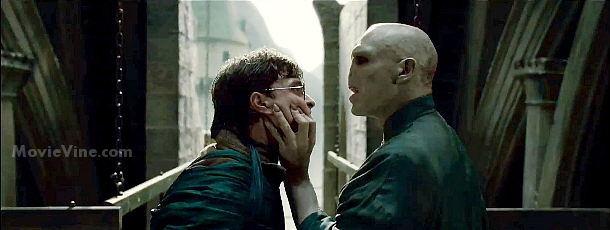
Reviewing the final “Harry Potter” film is tricky business. It is impossible to not mention the worldwide phenomenon that surrounds it, or the sheer miracle of its existence. Credit should be given to Warner Bros up front: they aren’t just cashing in on the book’s popularity and churning out shitty movies, like some studios I could mention (coughSUMMITcoughTWILIGHTcough). The studio is proud of this franchise, and they put hundreds of millions of dollars and thousands of talented artists to work in making these films as beautifully crafted and well made as possible. Some rival the books in quality, and some honestly exceed their literary counterparts. Now, with nearly 20 hours of film and ten years behind us, we can look at the film series as a whole and marvel at the fact that even it’s worst installments (Hi there, Chamber of Secrets!) hold up better in hindsight.
Over the past week I rewatched each film as I prepared for Thursday’s midnight screening, and was taken by how charming the evolution of the series is. Christopher Columbus gets a lot of grief for the first two installments, but you have to give him credit for finding Daniel Radcliffe, Rupert Grint, and Emma Watson. Columbus built the Wizarding world to the best of his ability, and his casting choices pay off for future directors in spades. Back then the story didn’t have an end, so Columbus and writer Steve Kloves packed in as much as they could in case it was needed further down the line. The result is a pair of awkward, lanky films that are only exhausting because they’re overstuffed. But they’re still good. They aren’t as flashy as the latter installments, but let’s face it: when John Williams’ theme plays, and the white owl soars over Hogwarts, we all soar a bit too.
Alfonso Cuaron stepped in for the third (and best) installment, Prisoner of Azkaban, and while he shook up the style and mood well, he handled the change from “children’s film” to “family film” well. One of the greatest things about the series is the fact that its audience grew older just as Harry did, and the awkward early teen years are handled with grace here. This is also the first film where the main trio become just as solid actors as their supporting cast, and any child actor would be jealous of their experience. These kids basically got to attend acting classes with Alan Rickman, Maggie Grace, Gary Oldman, and the like every year for a majority of their adolescence. No wonder their performances in later films border on superb.
It is here that we must address the passing of Richard Harris, and Michael Gambon’s taking over the role of Dumbledore. Viewed back to back, the switch is jarring, and honestly a bit sad. Harris brought a quiet, playful nerve to Dumbledore that Gambon can’t quite duplicate, and Gambon never seems completely comfortable in the role. Harris originally took the part because his granddaughter threatened to never speak to him again if he didn’t, and his reverence for such an important figure is felt in the portrayal. Gambon plays him as a man, a frustrated one at that, and while that works thematically, I can’t help but wonder what it’d be like if Harris was still around.
Of course, dealing with death is part of growing up, and the fourth film faced that head on. Goblet of Fire is the film with the fastest pace, and the first PG-13 entry. Mike Newell sets the film entirely in the magic world, with no sign of Uncle Vernon or Aunt Petunia. The stakes are raised, Voldermort returns, and the stage is set for David Yates to bring it home. From here on in each film got darker and more adult in nature, but they also took time to breathe.
Order of the Pheonix, Half Blood Prince, and Deathly Hallows Pt 1 are all fine films, and they work as a slow march towards the big finish that is Deathly Hallows Pt 2. Yates stages the Battle of Hogwarts as a purely character driven series of events, never getting bogged down with sorrow nor disconnected from the destruction. When the Quidditch pitch is burned and the Great Hall rendered unrecognizable by debris and chaos, it’s a gut punch we feel that only great cinema can provide. But even amongst all the action and bloodshed within the finale, Yates knows the power of a calm moment.
It is in these calm moments that Harry Potter shines. It is easy to walk around like a badass and do what needs to be done without hesitation. But it is also boring to watch. We see Harry as just a boy, thrown into something huge and absolutely terrified of the fate he cannot escape. Harry’s true heroism comes from summoning the courage to overcome fear and face his death. As he walks the battlefield and sees the many dead bodies, he can’t help but feel for every single person who gave their lives. Contrast this with a scene where Voldermort walks across a blood soaked floor with bare feet. Voldermort is so disconnected from any mortal being, while Harry is connected to everyone on his side. And by acknowledging these connections, and the value they hold, Harry becomes a man. It all colors in Rowling’s decree that Love is what truly matters, but Yates avoids Rowling’s preachy tendencies.
As one who studies film history, I am sometimes envious of those who saw Star Wars for the first time in theaters. Or Jaws, or Casablanca. To be one of those who were there, right on the ground floor before the elevator took off. Today I realize that my children, and my children’s children will be jealous of me, and my colleagues, we who got to witness the Harry Potter series unfold in real time. We who had to wait years between films, who attended every midnight screening, who watched the rest of the film industry try to duplicate the formula.
It is easy to be cynical of the recent cinematic landscape, what with its tireless sequels and remakes and reboots. But we are the generation given Harry Potter, and Lord of the Rings. We’re the ones who saw the birth and evolution of PIXAR. We get to see Christopher Nolan and Sam Raimi and Darren Aronofsky come into their own as filmmakers. While these are diamonds in the rough, they are most certainly some of the finest diamonds film can claim. And when our kids ask us about it, it’ll be hard to describe what it really felt like, to be given these wonderful gifts, just as those who lived through the 70s, the last Golden Age, can’t quite put into words how wonderful it was. We can only point to the work, and the fact that these films will stand for all time.
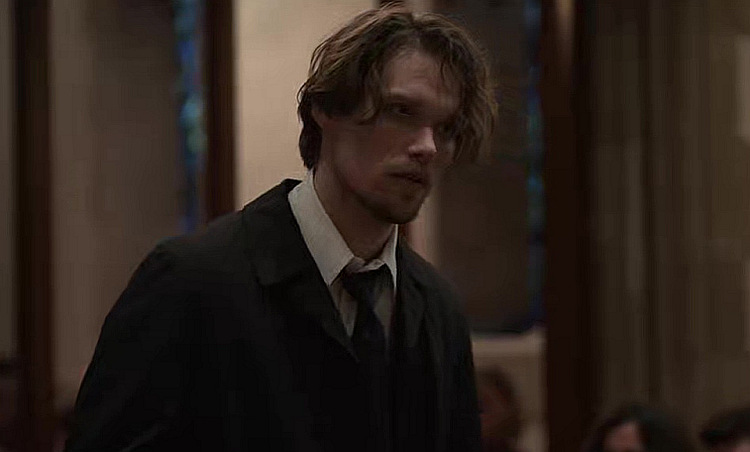

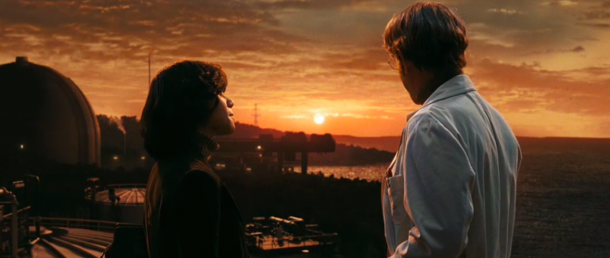
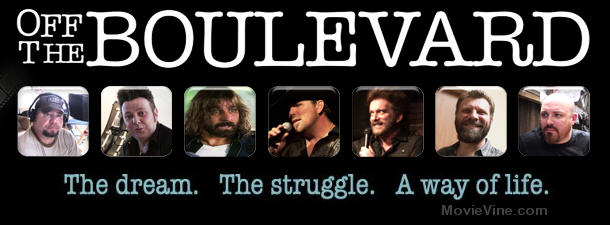
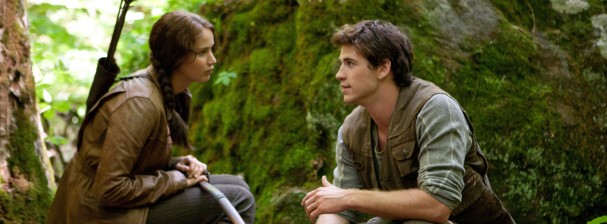
Well done and nicely stated. Thanks for the summary review.
It seemed strange to me that so many teens were raised on/grew up with Harry Potter, until I realized perhaps not so different, except for the obvious evil involved which caused many to make it taboo, as being raised on Barbara Eden’s I Dream of Jeanie, or Elizabeth Montgomery’s Bewitched. My teen enjoyed those too, although not the poor spinoffs of Tabitha or Sabrina — and she’ll never in my house watch that Twilight crap!